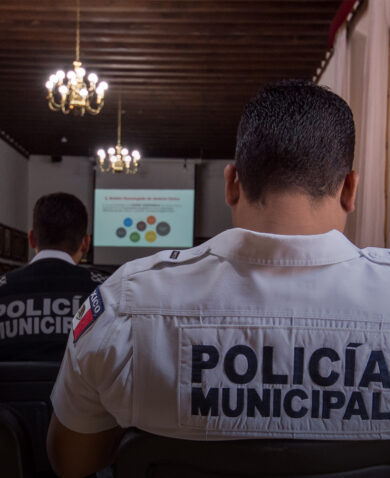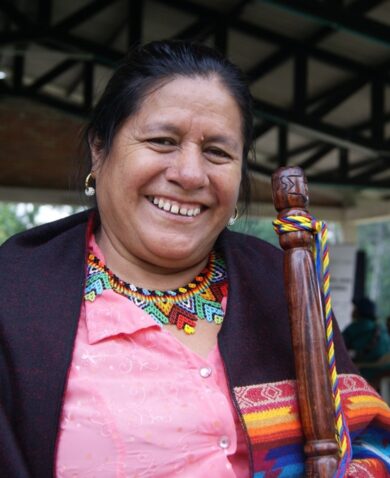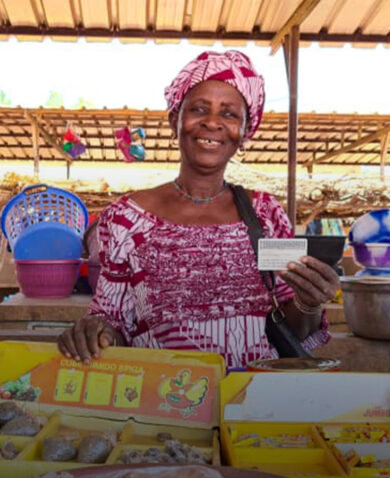
3 Questions with Lainie Reisman: Preventing Crime and Violence in Mexico’s Roughest Places
May 2, 2016 | 3 Minute ReadAccording to youth violence expert Lainie Reisman, better sub-national data on crime and violence is key to making places like Juarez, once the "murder capital" of the world, safer.
Your program is working in Juarez, Monterrey, and Tijuana, and other areas selected in part because of their astronomical crime and violence rates. Juarez was once the “murder capital” of the world. What’s the key to preventing crime and violence these areas?
We need reliable data and information and the willingness of officials at all levels of government to make technical decisions informed by evidence. That is a tall call in the U.S., let alone a country like Mexico where hard and reliable data really isn’t readily available and very little research into what has worked (or not) in diverse Mexican contexts in regards to violence prevention.
The case of Juarez, where crime has actually fallen as of late, is an interesting one and highlights the need to document, systematize, and evaluate interventions in order to determine the extent that they can be replicated or scaled up. If you ask local leaders why crime levels have fallen, you will receive a wide variety of responses. But most would make reference to the coordination and commitment of the private sector, civil society, and local government, complemented by federal resources.
JPV firmly believes that investments in prevention work best when there is a strong multi-sectorial commitment to balancing prevention with traditional law enforcement programs. This commitment begins with strong local government leadership to bring the various actors to the table.
The JPV program is designed to help the stakeholders you mentioned – government, civil society, academia, and private sector – to build the capacity they need to replicate successful crime prevention models from Mexico and beyond. What crime and violence prevention models are you looking at and why do you think they are going to work in these areas?
Again, there is little hard evidence regarding what works in violence prevention and why in Mexico; however, global research does show that a long-term commitment to targeted early interventions yields the best returns. Unfortunately, this requires a degree of long-term planning that is difficult to count on. Taking this into account, as a five-year project JPV believes that targeted and focused interventions with extremely high-risk youth can yield measurable results in the medium term. We think this will help ensure prevention remains in Mexico’s toolbox, along with more traditional law enforcement approaches, to address crime and violence.
In terms of specific models, USAID recently commissioned a meta-analysis of more than 1,400 studies worldwide on violence prevention and found that two models in particular have a strong evidence base: focused deterrence and cognitive behavioral therapy. While focused deterrence involves close work with the police, which JPV is not permitted to undertake, cognitive behavioral therapy is one of the models we will be looking to promote in Mexico.
What capacities do you see as being the most critical for stakeholders in these areas to develop in order to reduce crime and violence?
Having worked in many other countries on violence prevention, where we are still fighting to get the concept of prevention considered as a legitimate part of a response to crime and violence, I can say that Mexico has significant capacity. Unlike most countries, Mexico has a legal and institutional framework around violence prevention and a significant federal budget – not to mention a very highly resourced private sector.
But Mexico is lacking in some areas. It needs to develop a culture of generating and using evidence to design more targeted investments that yield higher returns. Local government actors need greater technical capacity to understand the fundamental issues and complexity of prevention programming. Civil society organizations need help developing both the technical and institutional capacities to design, implement, and report on programs. The private sector, aside from its potential in terms of providing resources for prevention programs, also can play a tremendous role in terms of promoting core values like transparency, collaboration, and logically, return on investment. Last but not least, academia needs to walk hand-in-hand with implementing partners to document and evaluate violence prevention initiatives.
I’m optimistic about our role as JPV in stimulating these important debates in Mexico and about Mexico’s potential to become a reference in the region for crime and violence prevention. We hope help create sustainable institutional approaches and structures, to solidify long-term support for prevention. While it will certainly take more than five years, we hope to do our part to help support the Mexican institutions that will carry on this important work well beyond the point when our project closes its doors.










































